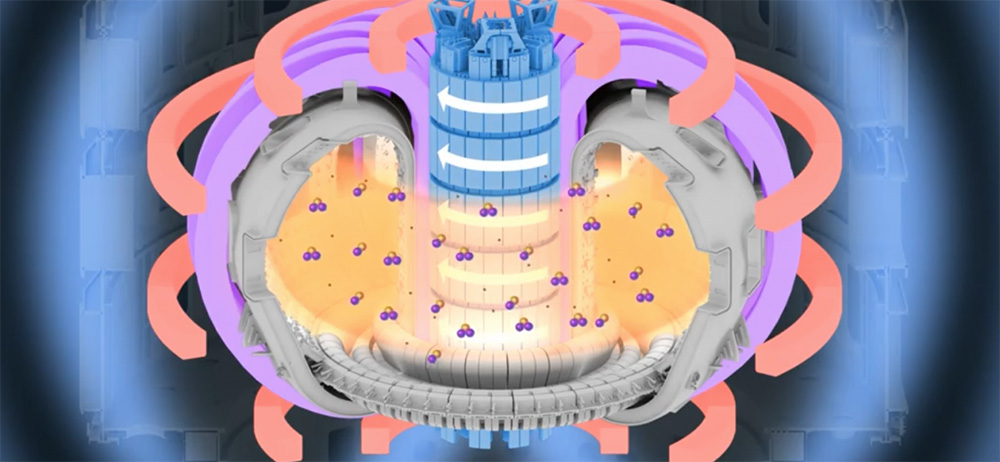What role will the central solenoid magnet in the ITER tokamak perform? US ITER produced an animation that shows the magnet’s critical role for starting and sustaining the ITER plasma.
Two US ITER experts, Nicolai Martovetsky, Magnet Development Project Engineer, and David Rasmussen, Head of Fusion Systems Integration, served as science advisors on the three-minute animation.
“As the animation illustrates, the central solenoid initiates and maintains the required plasma current,” explains Rasmussen. “Initiating and maintaining a large plasma current is what makes a tokamak plasma stable, and thus able to reach the temperatures and densities needed for efficient fusion reactions.”
A first-of-its-kind pulsed superconducting magnet, the central solenoid, or “heart of ITER,” will sit at the center of the ITER tokamak as one of three main magnet systems. The solenoid is one of US ITER’s 12 hardware contributions to the international ITER experiment. Two of the magnet’s modules have already been delivered to the ITER site in France.
The animation reveals the invisible forces of electricity and magnetism at work within the tokamak, and how their interaction will enable fusion to occur on a scale designed to demonstrate the feasibility of fusion energy.
As a high-profile, global effort, ITER is a great opportunity to educate about the principles behind fusion energy, Rasmussen said.
“Because of its physical and international scale, and the progress towards fusion energy that it represents, ITER captures the public imagination,” Rasmussen says. “But the physics and technology behind it are not widely understood. This animation helps address that.”
 US ITER produced an animation that shows the central solenoid's critical role for starting and sustaining the ITER plasma.
US ITER produced an animation that shows the central solenoid's critical role for starting and sustaining the ITER plasma.